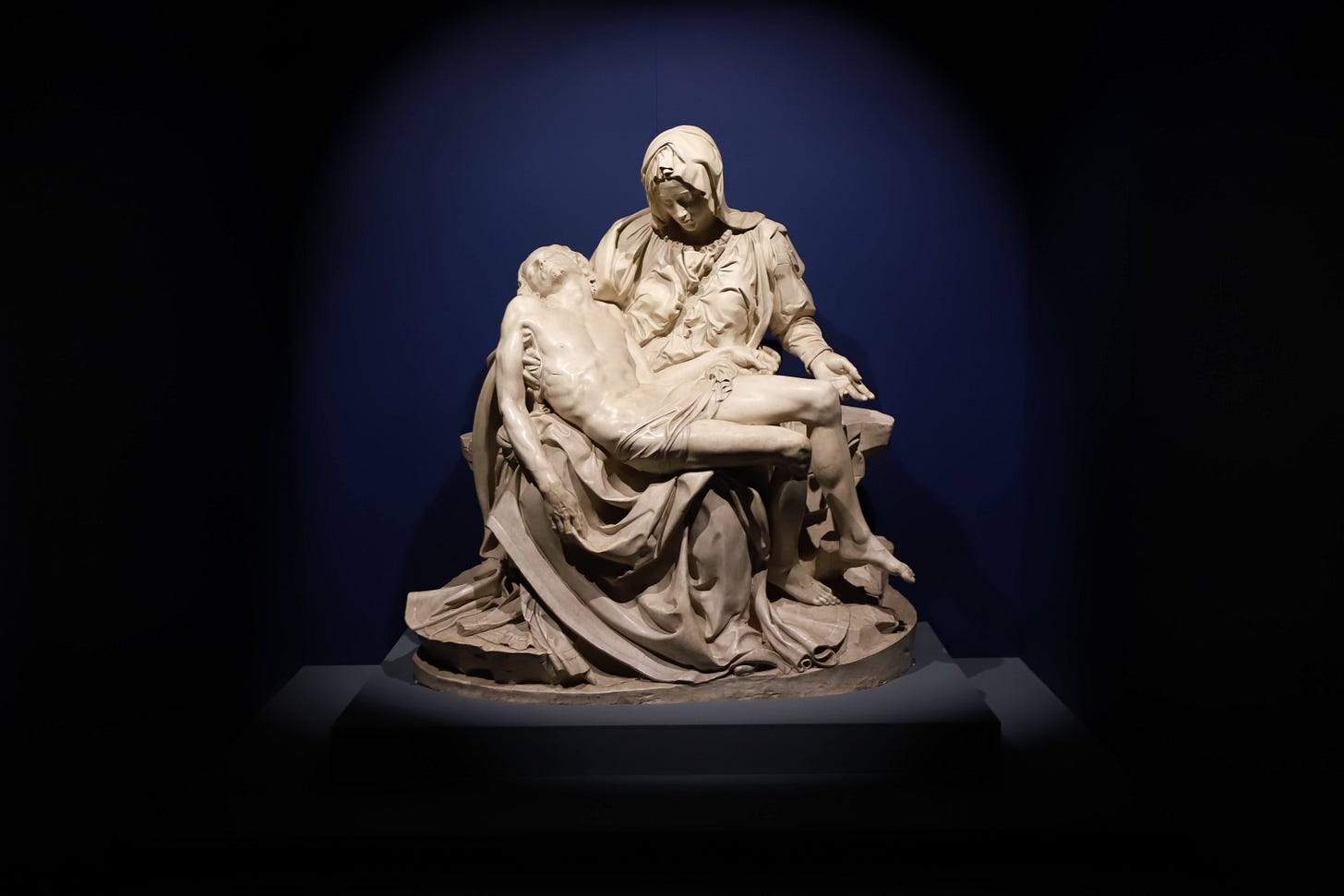Michelangelo di Lodovico Buonarroti Simoni’s Pietà was the highlight for many of the 1964 New York World’s Fair.
It is the only work he ever signed (he later regretted that), and he completed it when he was just 24 years old. Pietà is considered one of the greatest works of the Renaissance. I was just thirteen years old when I saw it at the New York World’s Fair.
In 1499 the young artist carved it from a single block of cararra marble. Five centuries later, it captured the imagination of visitors to the Vatican Pavilion at the fair.
A French Cardinal, Jean de Billheres, commissioned the sculpture for his tomb. He wanted to be remembered for a long time. He is all but forgotten, but the sculpture is renowned to this day.
But Michelangelo, according to historian Giorgi Vasari, was worried that his role in creating it would be forgotten: “One day Michelagnolo [sic], entering the place where it was set up, found there a great number of strangers from Lombardy, who were praising it highly, and one of them asked one of the others who had done it, and he answered, 'Our Gobbo from Milan.' Michelagnolo stood silent, but thought it something strange that his labors should be attributed to another; and one night he shut himself in there, and, having brought a little light and his chisels, carved his name upon it.”



